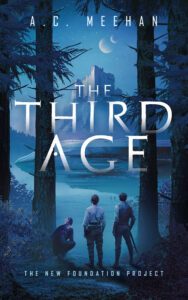As I mentioned in my last post, a well-populated story world feels more realistic to me. I like having a large cast and I like seeing how they interact with the people around them. The trouble is that keeping who’s who clear for readers isn’t always easy. I don’t mean keeping track of who’s speaking, but making sure that a character’s identity is clear and stable across all the different relationships and circumstances in the story.
Name is defined as the “word by which a person or thing is denoted.” The word’s root is Proto-Indo-European “no-men.” So that’s were we get nomenclature, nominal, misnomer and all the rest. Names are the labels that help us keep track of identities. Intuitively, we understand that connection—we might say a name does or doesn’t suit someone, but most of us couldn’t explain what we mean by that.
In high school and college, I loved the Russian writers. Most especially Dostoevsky. The characters’ names were a challenge for me, though. For instance, the protagonist of Crime and Punishment is Rodion Romanovich Raskolnikov, also called Rodya or Rodka. His girlfriend’s name was even more confusing to me: Sofya Semyonovna Marmeladov is sometimes called Sonya or Sonechka. Since the formal names weren’t familiar to me, I didn’t automatically associate those nicknames with them, and I could get very tangled up.
It’s one of the reasons that the old advice for writers to make sure your characters have distinct names is still good, as far as I’m concerned. But man, that can get hard when you have a lot of characters. I realized at one point that I had Jamie and Jeremy in conversation, so someone had to get a new name. I also didn’t want Abby and Allie, and realized that a lot of the names that seemed to suit either woman also started with A. This challenge is intensified by the fact that the worlds will collide in book three, so the distinctions need to work within the current setting and across them. At least search-and-replace makes the mechanics of a name-change easy.
I spend more time than I’d like on “name the baby” websites, looking for a name that has the same flavor as the one I originally chose, but which looks and sounds totally different. In real life, we somehow manage those close-degree names without too much trouble. We even deal with having five classmates named Jason. (True story.) It works because we associate a whole person with the name. In real life, the name isn’t the identity, it’s just the label.
In fictional writing, all the ways we relate to the world are pressed into words. (I don’t consider it “reduced” to words!) We don’t have use of the unverbalized, instant-recognition version of “that’s Jason-who-sits-beside-me-and-plays-soccer.” The labels have to do almost all the work of helping the reader track identities through the story.
Quite likely that’s the reason I find this tricky. Since I know the characters well, I can keep track no matter what I call them. It feels entirely manageable that Captain Haldon is also sometimes called Stewart and sometimes Captain and sometimes Haldon, depending on circumstance and relationship. He is all those things, because, well, he is. It feels natural to switch among the names—as I’m sure it felt natural to Dostoevsky. I don’t want readers to struggle with it, though. I know that when I get into revision, it’s one of the things I’ll need to pay attention to.




